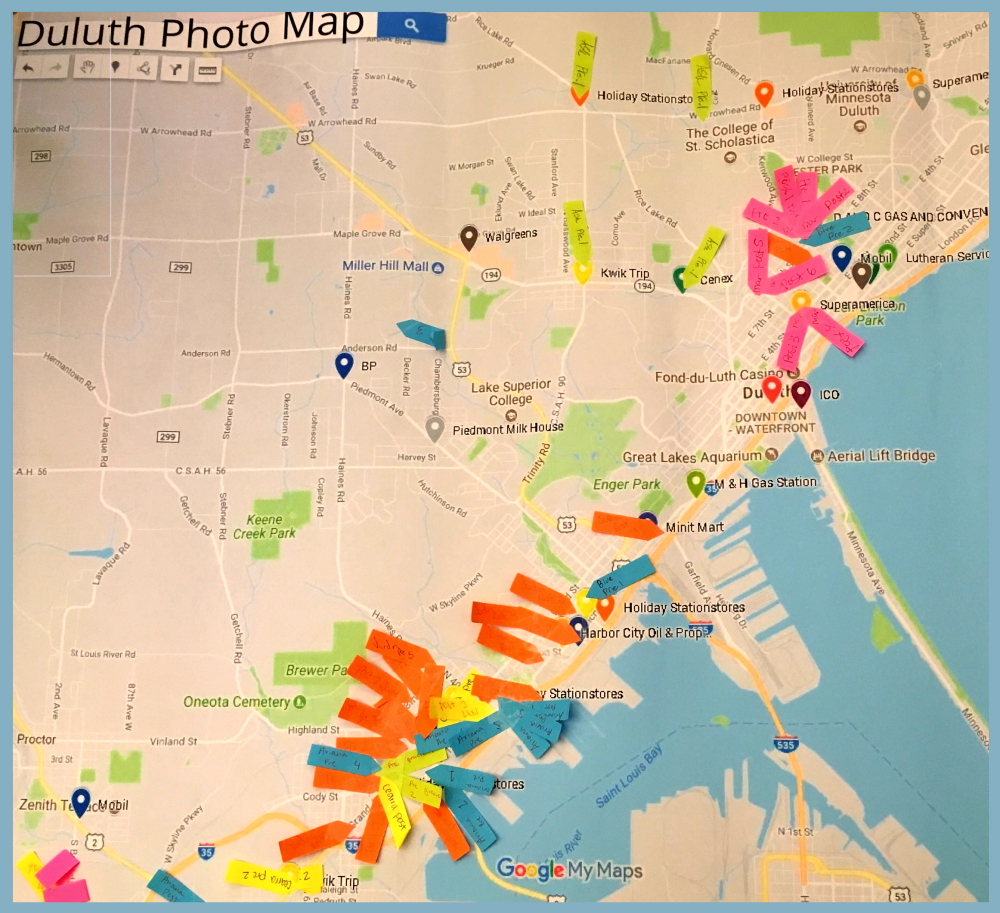 ALPHA PHOTOSTUDIO/SHUTTERSTOCK
ALPHA PHOTOSTUDIO/SHUTTERSTOCK
Let’s start with what we know to be true: Youth have expertise, wisdom and unique skill sets. Professional researchers and evaluators can amplify these strengths by partnering with youth to design and implement evaluation and research projects.
The participants featured here were part of a team of 30 youth evaluators who collaborated with Rainbow Research staff in 2018 to evaluate how youth were impacted by policies restricting sales of menthol tobacco products at gas stations and convenience stores in two Minnesota cities. Further information about these menthol policies is in this case study.
The evaluation project used a combination of photovoice and interviews with over 200 additional young people to explore smoking behaviors, access points for tobacco and awareness of menthol advertising. Photovoice includes taking photos in response to prompts, then critically discussing the context and meaning behind the photos.
Peer interviews reach youth who otherwise might not engage with adult evaluators and bring up honest answers to questions about stigmatized issues. While we conducted this project in person in Minneapolis and Duluth long before concerns of social distancing, a similar project could be undertaken today using some basic technology.
Five youth members of the original team reunited recently to reflect on the experience and how it could be adapted in the current context. They described themselves as:
- A 19-year-old graduate from an alternative school, looking for more options to give back to their community and others.
- A 19-year-old mom who manages a group home, whose goal is to help those less fortunate.
- A 13-year-old entering the eighth grade, interested in learning more about their community.
- A 16-year-old entering her junior year of high school, who’s been actively involved in her community since she was 13.
- A 17-year-old chronically ill and disabled transgender man who is passionate about working to better their community.
‘First-person experience’
All were under 18 when they participated in the original study. Here’s an edited version of our conversation:
Q. How would you describe the value of photovoice?
A. Our project was addressing how cigarette companies target youth and teens in different types of communities, and how the advertising changes depending on whether you’re in a wealthy or poor community.
I think it was helpful because it showed, in some places, the changes made as a result of the policy. It shows actual evidence. This is a real thing. It’s not like, ‘Oh, we’re just talking about it.’ There are photos and actual proof, because everyone likes proof.
You could collect data on if this spot is where people smoke, or if this spot sells cigarettes, or stuff like that. When we have that spot down, we could put a mark on it or a checkpoint, and that checkpoint has a meaning to it.
It was valuable to us because we live in this environment. It’s not like we went to a different neighborhood. This is first-person experience of living in a surrounding. I think when people can see that these are kids from these neighborhoods surrounded by that all day, it is an issue.

Rainbow Research
Map checkpoints.
I feel like if you cross-reference the photos of advertisements and then the incomes in those communities, you’d probably find a lot more advertising in poor communities. Because there are some stores that will have five different cigarette advertisements.
With photovoice you don’t have to take anyone’s word for it. You can see for yourself the differences in advertising and cigarette usage in different communities. It becomes a lot easier to visualize the socioeconomic differences tied to marketing when you’re looking at the firsthand photos that we were able to take just following our normal routine.
‘Much better environment’
Q. What’s the value of youth-led interviews?
A. It’s easier for youth to talk to youth and you’re more likely to get more honest answers. Tell us what you’re looking for in someone and we most likely will have an easier time finding those people and just talking to them normally, rather than sitting across the table from someone three times their age and they’re asking all these questions about things where it’s like your parents would kill you if they knew you did that. They know the conversation will stay anonymous; they’re trusting you, and it’s just easier.
If you’re 15 years old and you’re a person of color, you’re not going to want a 55-year-old white male therapist to talk to. But if you’re talking to someone that’s at least within your gender or within your race, it’s easier and you feel more comfortable because you naturally have that connection.
When adults are asking those questions, it almost feels like an interrogation more than a conversation. And when you’re with someone who’s around your age group, it’s more of a conversation or casual talking than an interview. Teens already talk with each other about a lot of things going on in the world.
If you’re talking to someone in your peer group who has no judgements and is willing to listen, it creates a ` for getting true and accurate information.
And if you don’t trust youth to do that, then why are you studying youth? You got to involve the people that you want answers to. You can’t just do it all by yourself.
Doing interviews in our project, we found out there are corner stores that sell cigarettes to kids. There are people’s parents that are willing to buy them cigarettes. It’s not just one thing.
I just find it really interesting how many tobacco shops don’t ID and they know you’re underage, but they know that they’re not going to get caught. We wouldn’t have known that unless we interviewed. That was important.
How to find the right youth
Q. What would it look like to do this project now given social distancing?
A. When we did the interviews (2018), I still did it virtually because I wasn’t able to meet up with people, and that worked out fine. I texted them the questions.
Use Google Sheets or Google Questions. You’re able to send out an email to multiple people and they give you feedback. Reach out to people, get people’s emails or post about it.
Ask a question on your Instagram Story. Post on Snapchat and ask people to swipe up with their information if they’re interested in helping you out with doing an interview. Or you could just post a link.
For the photos, you could try walking around your neighborhood with Google Earth.
Since quarantine started, I have had a lot of time to walk around my neighborhood, so I could still take pictures. I did virtual interviews with people last time; I’m sure we would be able to do that on a larger scale again.
Q. What other advice do you have for organizations looking to partner with youth for evaluation and research?
A. Not all youth are best for projects. I would say that knowing that that person wants to actually do it, and has their own thought process about it, and that they’re not just going along with what you’re saying. Because you’re asking them to be involved, not just do what you say. That also means the adults on the team have to be ready to listen and change what they’re doing based on what the young people are saying.
Come to already existing programs that have teens that are passionate about something or have come together for a goal already. These teens have a set of skills that are going to be helpful in whatever you’re trying to learn. We’re already good at going into the community. We’re already good with learning, talking to people and reaching out. So, reaching out to those groups of youth already doing peer outreach in the community that you’re interested in is very beneficial.
Listen to what teenagers have to say and recruit teenagers who will be assertive with their opinions and input. It’s really difficult to find out the issues facing young people with a group that won’t be completely honest about it. Also, diversity in research groups is really important. During our group meetings I heard people talk about things I’d never considered before and it was well reflected in my research work.
The funding for this project was provided by ClearWay MinnesotaSM and Blue Cross and Blue Shield of Minnesota.
This column was written by Tsunami Douglas-Webb, Katie Fritz Fogel, Robyn Hanson, Alecia Mattison, Brianna Phillips and Blue S-S.





























